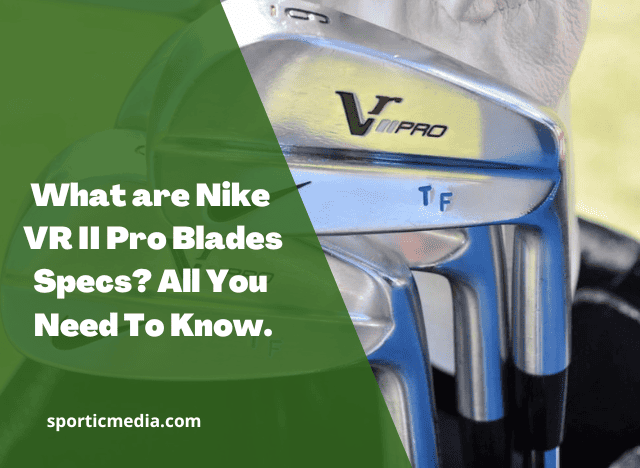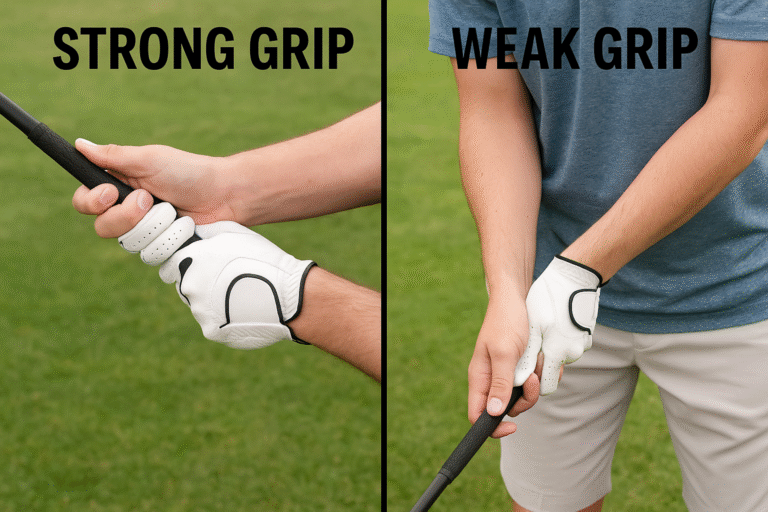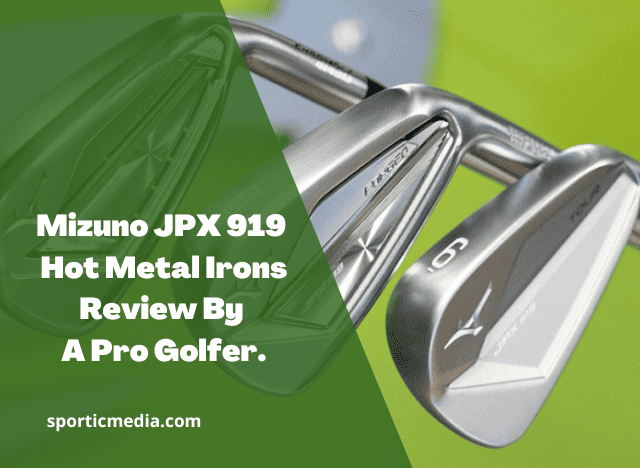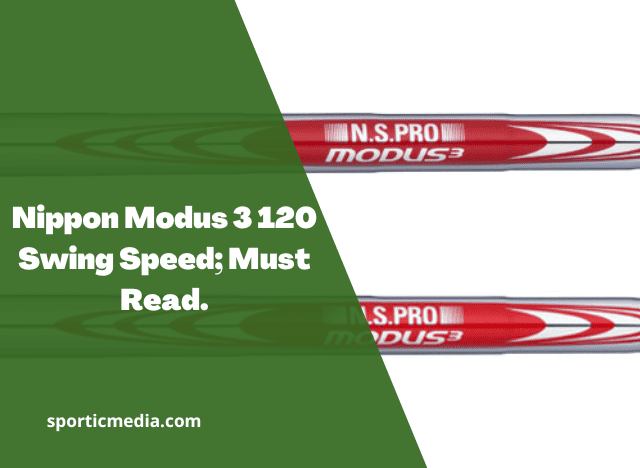The Nike VR II Pro Blades are elite golf irons designed for top-level players. These clubs offer precision and control with their small head size, minimal offset, and traditional grind. Made from soft carbon steel, they provide excellent feel and feedback. The specs include varying lofts, lie angles, and lengths, ensuring golfers can fine-tune their shots. These irons are ideal for low-handicap players seeking the ultimate workability but may be challenging for beginners due to their unforgiving nature.
Table of Contents
When were the Nike VR Pro blades released?

The Nike VR Pro Blades were released in October 2010. They were a popular choice among low-handicap golfers and professional players, and they were known for their excellent workability and shot shaping. However, they were also unforgiving of mishits, and they were not a good choice for high-handicap golfers.
Nike discontinued its golf equipment business in 2016, so the VR Pro Blades are no longer available new. However, they can still be found on the used market.
Why Nike VR II Pro Blades?
The Nike VR II Pro Blades are a set of golf irons distinguished by their precise design features. Crafted from soft carbon steel, these irons give golfers a remarkable feel and feedback. Their muscle-back design offers supreme workability, allowing players to shape their shots precisely.
With a compact head size, these clubs leave little room for error, promoting consistent ball striking. The minimal offset minimizes hook tendencies, encouraging a more accurate draw. A thin topline inspires confidence at the address, enhancing alignment.
The traditional grind balances turf interaction and forgiveness, making them versatile in various course conditions. These features cater to accomplished golfers seeking superior control and workability in their irons.
What are Nike VR II Pro Blades Specs?
| Specification | 4-Iron | 5-Iron | 6-Iron | 7-Iron | 8-Iron | 9-Iron | PW (Pitching Wedge) |
|---|---|---|---|---|---|---|---|
| Loft | 37° | 34° | 31° | 28° | 25° | 22° | 19° |
| Lie | 63° | 63.5° | 64° | 64.5° | 65° | 65.5° | 66° |
| Length | 38.25″ | 37.75″ | 37.25″ | 36.75″ | 36.25″ | 35.75″ | 35.25″ |
| Offset | Minimal | ||||||
| Grind | Traditional | ||||||
| Weight | 415g | 410g | 405g | 400g | 395g | 390g | 385g |
| Material | Soft Carbon Steel |
01. Loft
The Nike VR II Pro Blades have varying lofts for each club, ranging from 19 degrees for the Pitching Wedge to 37 degrees for the 4-Iron. This variation allows golfers to control the trajectory and distance of their shots effectively.
02. Lie
The lie angle, which affects the club’s orientation to the ground, also varies across the set, from 63 degrees for the 4-Iron to 66 degrees for the Pitching Wedge, offering options for customized shot execution.
03. Length
The irons have different lengths, with the 4-Iron being the longest at 38.25 inches and the Pitching Wedge being the shortest at 35.25 inches. This difference in length helps golfers adjust their stance and distance control.
04. Offset
These irons are designed with minimal offset, meaning the leading edge of the clubface is almost in line with the hosel, promoting precision in shot placement.
05. Grind
The traditional grind of the clubs balances turf interaction and forgiveness, making it versatile for various course conditions and shot types.
06. Weight
The weight of each iron varies, with the 4-Iron being the heaviest at 415 grams and the Pitching Wedge being the lightest at 385 grams. This weight distribution can impact swing feel and control.
07. Material
The Nike VR II Pro Blades are crafted from soft carbon steel, which not only provides durability but also offers an exceptional feel and feedback to the golfer, allowing for better shot assessment and control.
Who Should Play the Nike VR II Pro Blades?

The Nike VR II Pro Blades are best suited for low-handicap golfers, experienced ball strikers, and those who desire maximum workability on the golf course. These irons cater to golfers with a high level of skill and precision in their game.
They excel in delivering control and precision, making them suitable for adapting to various course conditions and effectively shaping shots. The irons’ unforgiving nature rewards consistent ball strikers, while skilled players value their feedback and feel. This makes them ideal for golfers seeking precision and control in their game.
Ping Hoofer Vs Hoofer 14; My Honest Comparison
sporticmedia.com
Who Should Not Play the Nike VR II Pro Blades?
The Nike VR II Pro Blades are not recommended for several categories of golfers.
- High-Handicap Golfers: These irons are designed for advanced players and provide limited forgiveness. High-handicap golfers, who tend to have inconsistent ball striking, may find these irons challenging to use effectively.
- Novice Players: Golfers who are relatively new to the game may struggle with the precision required to use these irons. They might find it frustrating and counterproductive to their development.
- Seeking Forgiveness: Golfers looking for clubs that provide forgiveness on mishits should look elsewhere. The VR II Pro Blades are designed for precision, not error correction.
In summary, these irons are best suited for experienced, skilled golfers, while less experienced or inconsistent players may find them less forgiving and harder to use.
What are the best Alternatives to the Nike VR II Pro Blades?

The Nike VR II Pro Blades are designed for advanced golfers seeking maximum control and workability. If you’re looking for alternatives with similar characteristics but potentially more forgiveness, you might consider these options:
01. Titleist T100 irons
These irons offer an excellent balance of workability and forgiveness. The T100s are known for their clean, classic look and feel, making them a great choice for low-handicap players. They provide the ability to shape shots while offering some margin for error on off-center hits, making them versatile for a range of skill levels.
02. Mizuno MP-20 MB irons
Mizuno is renowned for the feel and feedback of their irons, and the MP-20 MBs are no exception. They are designed for accomplished ball strikers who appreciate a buttery-soft feel. While they offer maximum workability, they also reward precise ball striking with consistent performance.
03. Ping i59 irons
The Ping i59 irons are known for providing workability while also being a bit more forgiving than traditional blades.
They are designed for skilled players who want control but may appreciate a touch more forgiveness on their mishits. The i59s offer a sleek, modern look and are known for their consistent performance.
04. Srixon Z-785 irons
These irons are designed to cater to golfers seeking a balance between workability and forgiveness. While they offer the control required for shaping shots, they are also a bit more forgiving on off-center hits, making them suitable for low- to mid-handicap players. The Z-785 irons are also known for their soft feel and good feedback.
05. Callaway Rogue Pro irons
If you’re looking for workability with more forgiveness, the Callaway Rogue Pro irons could be a good choice. They offer a mix of workability and playability, making them suitable for a broader range of players.
These irons combine precision and forgiveness, which can be appealing to those who are transitioning from game-improvement clubs to a more player’s iron.
Each of these alternatives strikes a balance between workability and forgiveness, making them versatile options for players looking for control with a little more leeway on mishits. Your choice may depend on your specific preferences, such as the feel, look, and the extent of workability and forgiveness you desire in your irons.
What are the cons of Nike VR II Pro Blades?

The Nike VR II Pro Blades, while offering high performance, come with notable limitations. Their small sweet spot makes precise ball striking imperative, penalizing mishits more severely than other irons. This design is better suited for low-handicap golfers with consistent ball striking skills.
The irons are unforgiving of off-center hits, leading to loss of distance and accuracy, potentially frustrating those unfamiliar with blade irons. Moreover, their premium quality comes at a relatively higher price point, making them less accessible for budget-conscious golfers.
In summary, these irons excel in precision and control but are not ideal for high-handicap players or those on a tight budget.
Fujikura Ventus Red 5 Golf Shaft Review: A Game-Changer for Golfers of All Levels
sporticmedia.com
Discover the meticulous and expert-driven process behind our product reviews at Sportic Media. Our comprehensive guide, led by industry veterans, ensures you get the most reliable and detailed insights into golf equipment. Dive into our methodical approach by visiting How We Test Products at Sportic Media: A Comprehensive Guide
.





